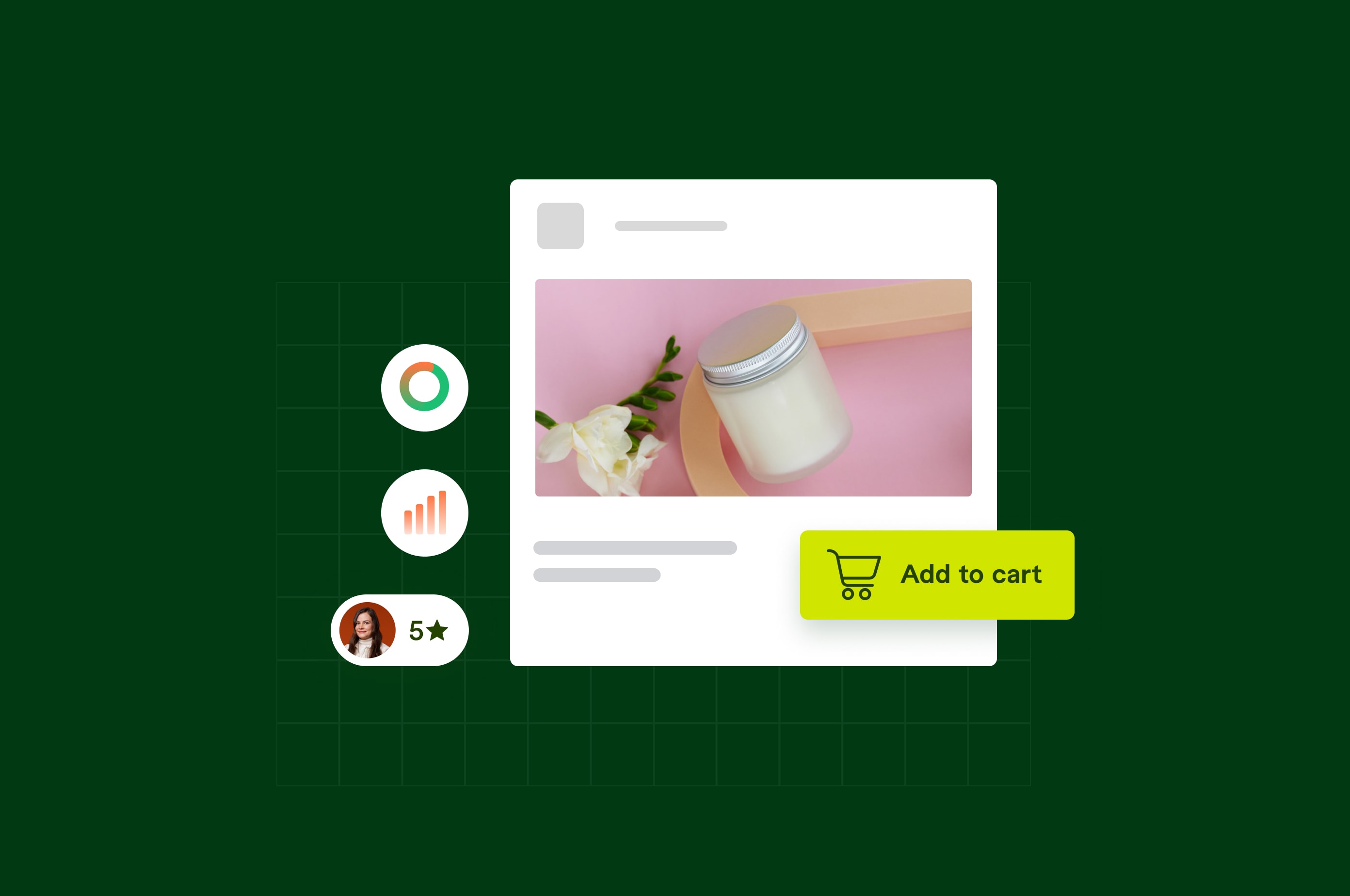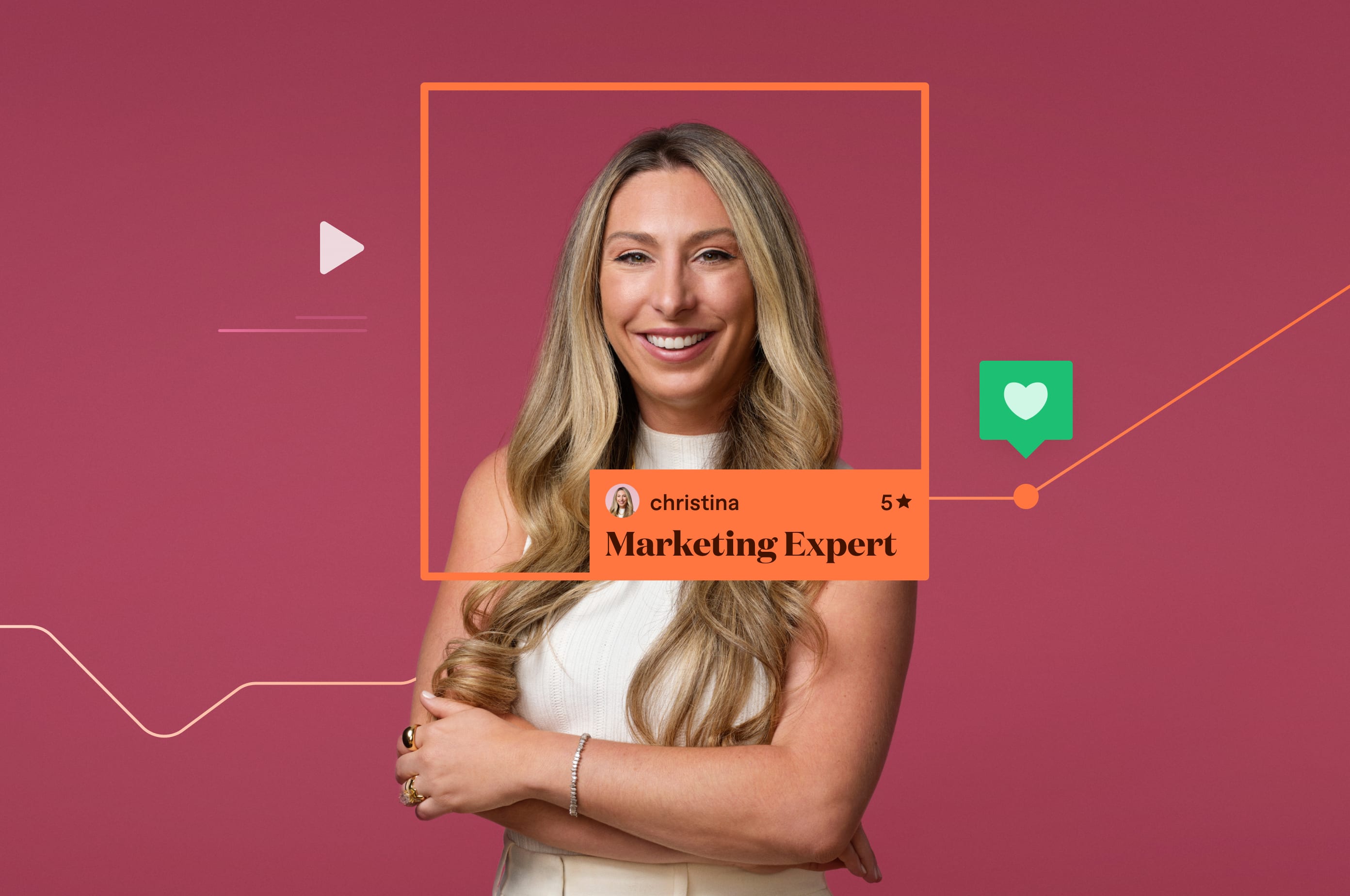What is Lead Generation: A Complete Guide for Business Growth in 2025
Learn the essentials of lead generation to turn prospects into loyal customers.
 April 29, 2025
April 29, 2025 9 minute reading
9 minute reading
Ask any business owner, and they’ll tell you that growth is one of the most important things in their business. One proven growth strategy is lead generation.
There are several different lead generation techniques and best practices businesses should implement to maximize the number of prospects they reach. Throughout this article, we will dive into those tactics to help you grow your brand.
Let’s get started.
What is lead generation?
Lead generation is the process you use to draw people to your business, generate their interest in your company's products or services, and get them on the path to purchasing. You can use various online and offline strategies to generate new leads, like social media marketing, blog posts, cold calling, or live events.
Lead generation should be an important part of your sales funnel as it’s been a tried and tested method of bringing in new business. In fact, lead generation has its own process in itself. You can think of it in three phases.
Here’s a basic example of what these phases might look like:
Phase one - Generate website traffic: Start by bringing your target audience to your website so they can learn more about what you do.
Phase two - Convert website visitors into leads: Get some information (e.g., an email address) from your website visitors, turning them into a lead.
Phase three - Convert leads into customers: Motivate those leads to buy through lead nurturing tactics.
How lead generation works
Let’s dig a little deeper. How, exactly, does lead generation work? Yes, we want to go from traffic to lead to customer. But how do you do that?
First, you need to research your target market. Understanding who you’re trying to reach with your products or services and what they’d be looking for from a business like yours is key to creating an informed lead generation strategy.
You can do this by:
Conducting market research
Analyzing your competitors and their audiences
Sending out customer surveys
Using social listening tools
Once you have a basic understanding of your target audience, it’s time to start creating relevant and engaging content. Get them interested in learning more about your business.
Content ideas include:
Videos: Engaging visual content that conveys information through motion, often used for tutorials, storytelling, or brand promotion.
Carousel posts: Multi-image or multi-slide posts, typically used on social media to showcase a series of related content, step-by-step guides, or storytelling.
Infographics: Visually appealing graphics that present complex information or data in an easy-to-understand format.
Ebooks: Digital books that provide in-depth knowledge on a specific topic, often used for lead generation or educational purposes.
Promote your content across various channels, such as your website, social media, email marketing, and more. Include links back to your website in hopes that someone will click and provide their contact information.
Let’s look at an example.
Your graphic design SaaS company has published a blog post on how to create well-designed social media graphics. You share your post on Facebook, and someone from your target audience (business owners and marketers) clicks on it.
You’ve packed your article full of actionable and valuable information, but you’ve also included a few calls to action for your newsletter that shares even more tips and tricks. Ideally, your reader submits their email address to learn more, giving you their content information so that you can start reaching out to them consistently.
You’ve now generated a lead. The next step is to nurture that lead by sending more content about how your software can do awesome things. Eventually, that lead will convert and become a paying customer so they can use your tool for themselves.
This has all been done by putting together a solid lead generation strategy. The better your strategy, the more leads you generate, and the more chances you have to convert customers.
Find a Lead Generation Expert for Hire
Lead generation techniques
Let’s look at a few ways to increase the number of leads your company receives. These tactics maximize traffic to your website and encourage more people to provide their contact information during content creation and promotion.
Content marketing
Content marketing for SMBs is the process of promoting your business through valuable, high-quality content with the goal of generating a lead or customer. This strategy looks a little something like this:
You identify major questions or pain points that your target audience has (like our previous example of how to design marketing graphics for their business)
You create actionable, quality content that answers those questions
You promote your business via this content
You generate leads from the people you have helped
Some content ideas to incorporate into your content marketing strategy include:
Blog posts: Written content published online to educate, inform, or engage an audience, often used for SEO and brand authority.
Long-form videos: Extended video content that provides in-depth insights, tutorials, or storytelling to engage viewers for a longer duration.
Podcasts: Audio content where hosts discuss topics, interview guests, or share insights, often consumed on-the-go.
Lead magnets (i.e., ebooks, white papers, reports): Valuable downloadable content offered in exchange for contact information to generate leads.
Webinars: Live or recorded online presentations that educate, train, or engage an audience on a specific topic.
Case studies: Detailed analyses of real-world examples showcasing how a product, service, or strategy solved a problem or achieved success.
Here’s an example of what this might look like. Email marketing tool Flodesk wrote a post titled "The Ultimate Guide to Email Design."
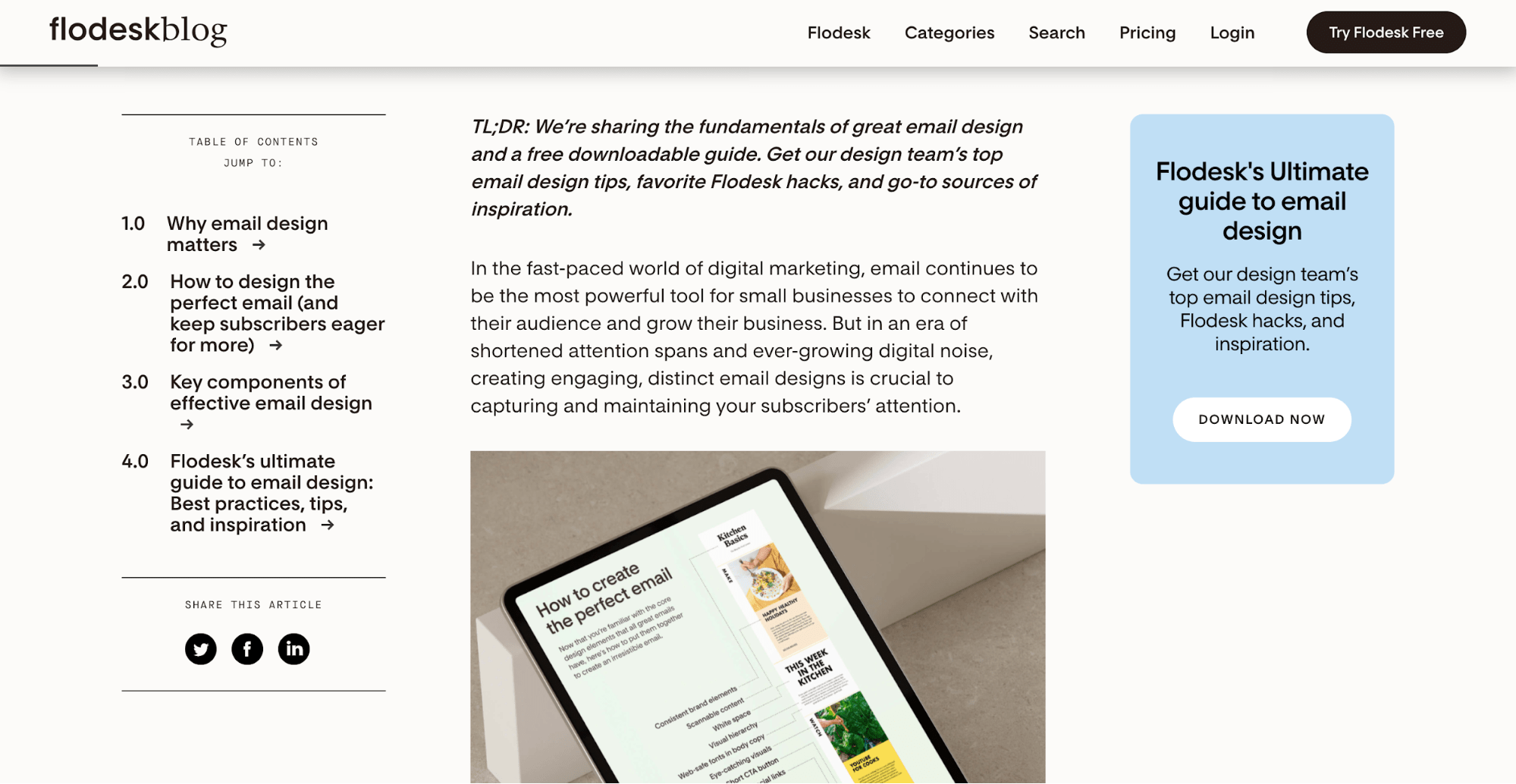
Flodesk
Not only does the blog post itself provide tons of information, but it also includes three calls to action (CTAs) to download a lead magnet with even more information. Interested readers can click on the “Download Now” button to be taken to a lead capture form:
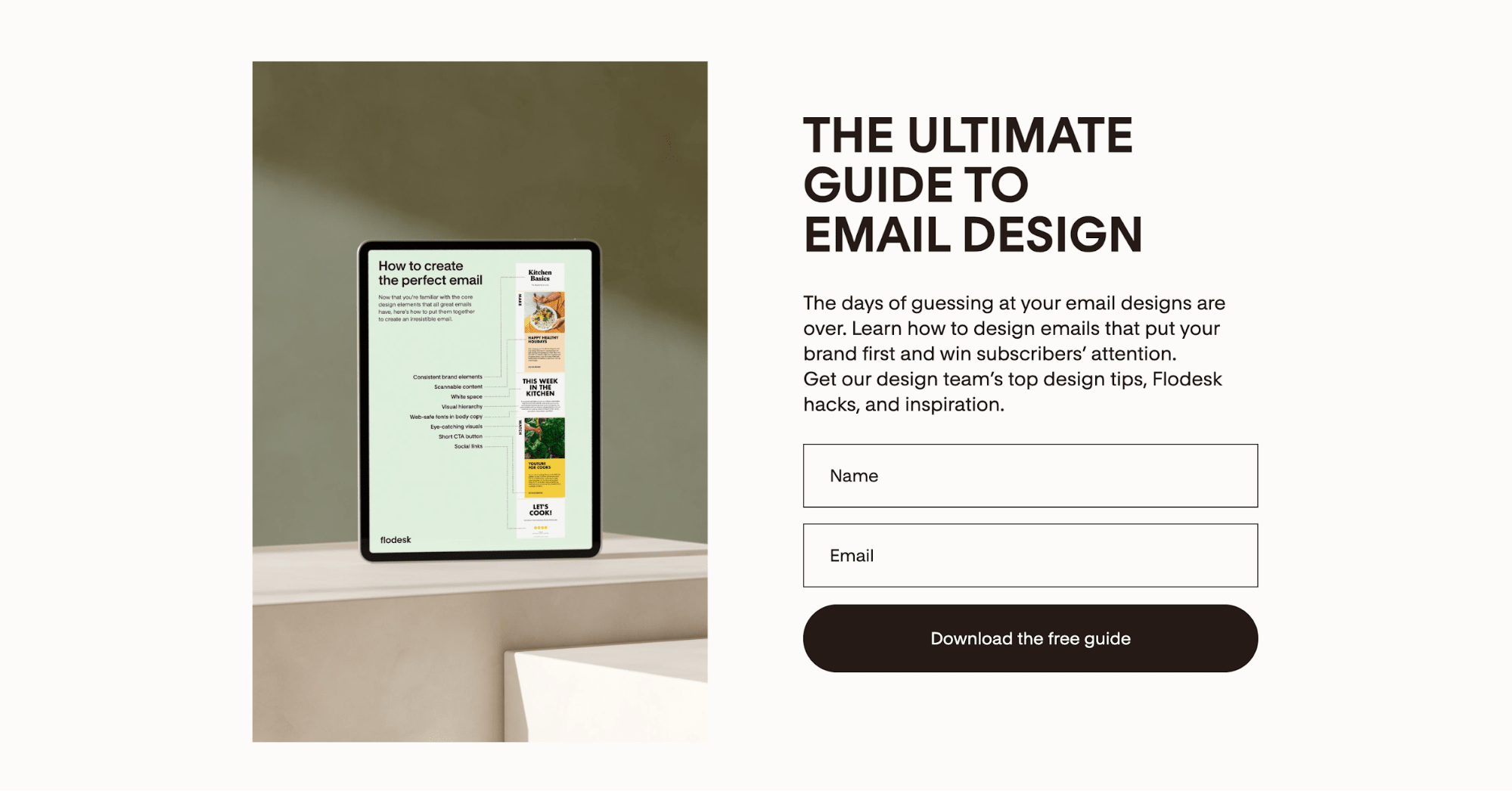
Flowdesk
Once users input their name and email address to download the guide, Flodesk has their contact information and can start nurturing them as new leads.
Landing pages
Landing pages are technically still a form of content. But, while the content we discussed under the last point is more informational or educational in nature, landing pages tend to be more transactional.
While your content marketing strategy focuses on creating long-form content to educate your audience on your industry, landing pages focus on educating your audience on your specific product or service. These have a much higher conversion rate than informational content and often lead directly to a customer rather than a new prospect.
However, they’re still powerful lead-generation tools. The strategy behind each one will differ depending on how your business works.
For example, for a software company that works on a freemium model like Buffer, a landing page will aim to bring in free customers that the company can then work on nurturing into paid customers. This landing page about TikTok scheduling is perfect for people looking for that specific service:

Buffer
However, a service-based company like content agency Grizzle will focus more on generating form submissions for calls to action like learning more information or signing up for a consultation. This content strategy landing page leads to a consultation form, immediately giving the team a sales-qualified lead (SQL) that they can start communicating with:
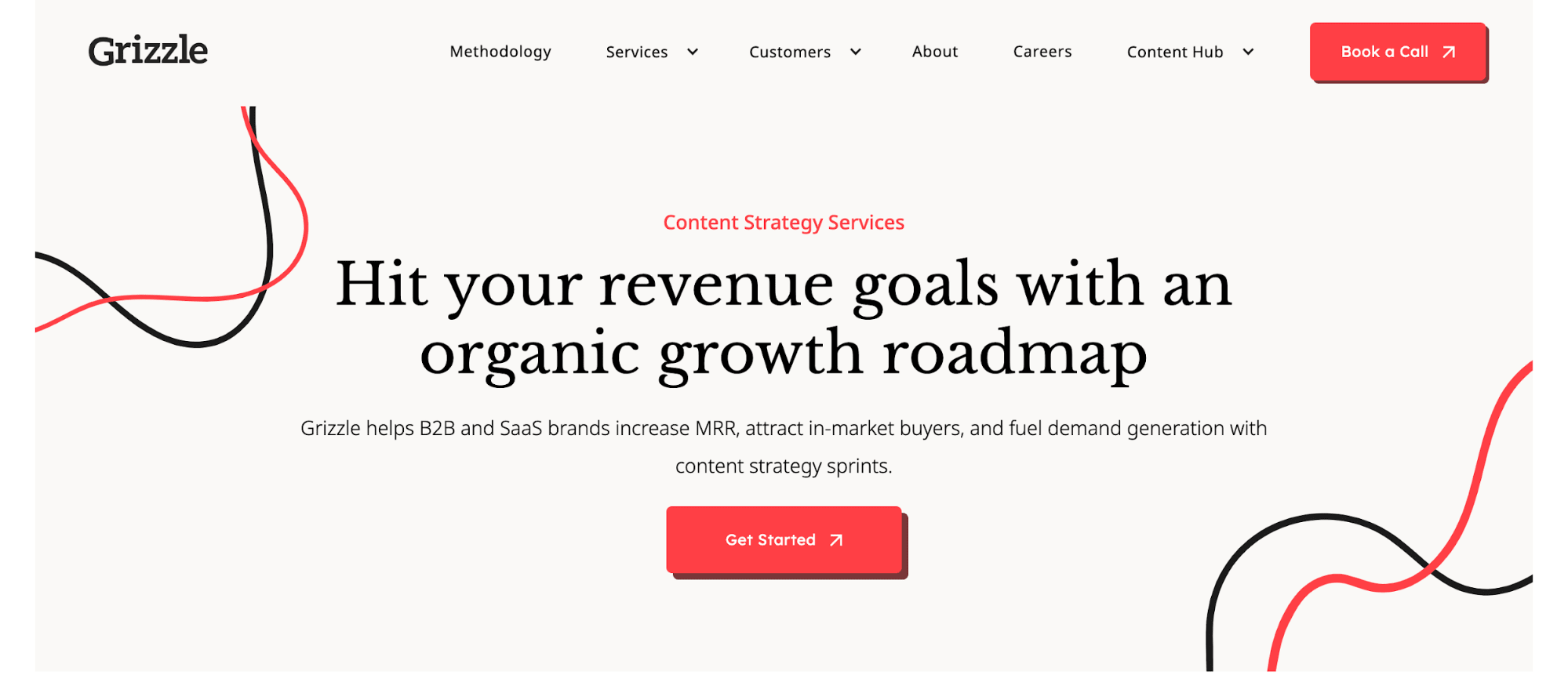
Grizzle
Find a landing page specialist for hire
Search engine optimization
Search engine optimization (SEO) is an inbound marketing strategy that uses both content marketing and landing page creation to generate website traffic from search engines. So this and the two previous techniques will all work together in tandem.
Essentially, your content creation should center around your search engine optimization findings. SEO helps you to identify:
What your target audience is searching for online
High search volume keywords to create content around
Secondary keywords to incorporate into your content
SEO tools like Ahrefs or Semrush can help you identify these keywords and topics. Or, get SEO services on Fiverr to help you get started.
Hire an SEO expert on Fiverr
Email marketing
Email marketing is more of a lead nurturing strategy once you’ve received someone’s email address. However, you can use a few tactics to collect more of those email addresses.
First, include email capture forms across your website and/or company blog. Use a call to action for signing up for your email newsletter to entice people to give you their email. With this method, you’re essentially telling them that you want to nurture them into becoming customers—and by giving you their email, they’re telling you that they’re here for it.
Here’s an example of an email capture form on bookkeeping software company HoneyBook’s blog:

HoneyBook
HoneyBook has let subscribers know exactly what they’re signing up for. Then, they’ll use their email newsletter to send educational content alongside CTAs so they can sign up for HoneyBook’s software.
Another way to use email is by cold emailing potential leads. This outreach is used by service-based companies or software companies looking to reach out to large teams or enterprise companies and is more of an outbound marketing tactic.
Use an email finder tool like Hunter or Rocket Reach to find the right point of contact at a company. Then, craft a compelling email that you send, asking them to connect or asking them if you can send them more information about your company.
You can use your outreach emails to collect leads for your email newsletter or as a more direct form of selling to potential customers.
Find an email marketing specialist for hire
Social media marketing and advertising
Social media is the perfect outlet for sharing your content and reaching a wider audience of potential leads. For example, you can share your blog posts on LinkedIn or link to your landing pages from your Instagram bio.
Many social media platforms also allow brands to run lead-generation advertising campaigns to gather even more leads. You can then upload these to your customer relationship management tool (CRM) to start nurturing or add to your email list.
Hire an expert social media manager on Fiverr
Chatbots
Chatbots are another technique for collecting contact information from potential customers. Use a website chatbot tool like ChatBot or a social media chatbot tool like ManyChat to set up automation sequences that help collect details from people visiting your website or message you on social media.
You can use your chatbot to do things like:
Share website content
Answer FAQs
Set appointments
Collect contact information
Here’s an example of a website chatbot on sales intelligence platform Cognism’s home page:
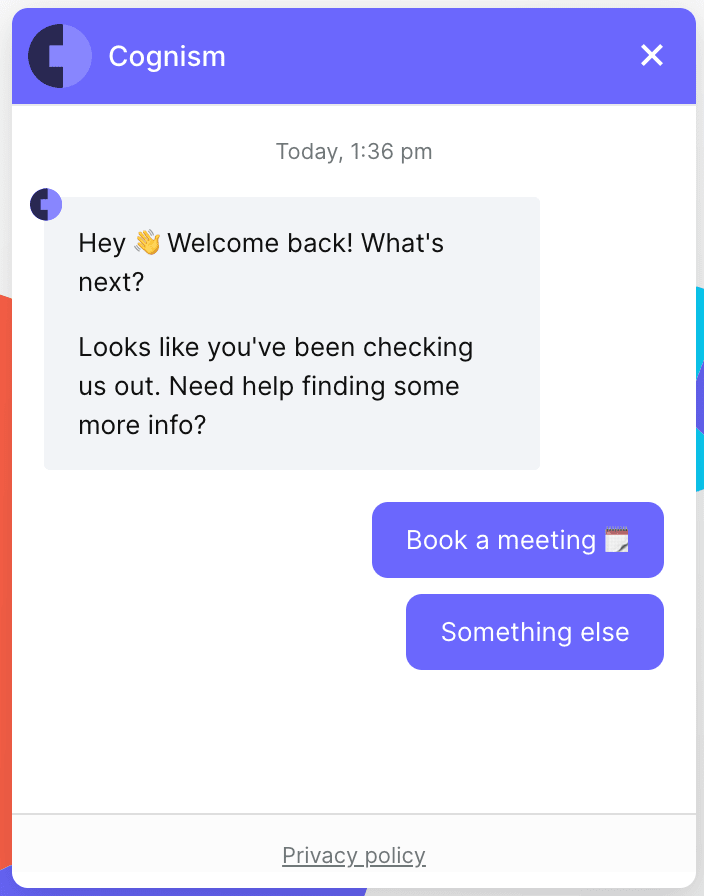
Cognism
Users can interact with the chat window to book a meeting or choose from a list of other prompts to find what they need. This is a perfect example of how a chatbot can generate leads.
Find Chatbot developers
PPC
PPC is another type of advertising you can use for a lead generation campaign. PPC, or pay-per-click, ads are typically search engine ads that help you place your landing pages at the top of search results.
So, someone searching for a survey maker will be shown these PPC ads to choose from. They can easily click and end up on a landing page meant to sign up free customers or collect lead information.
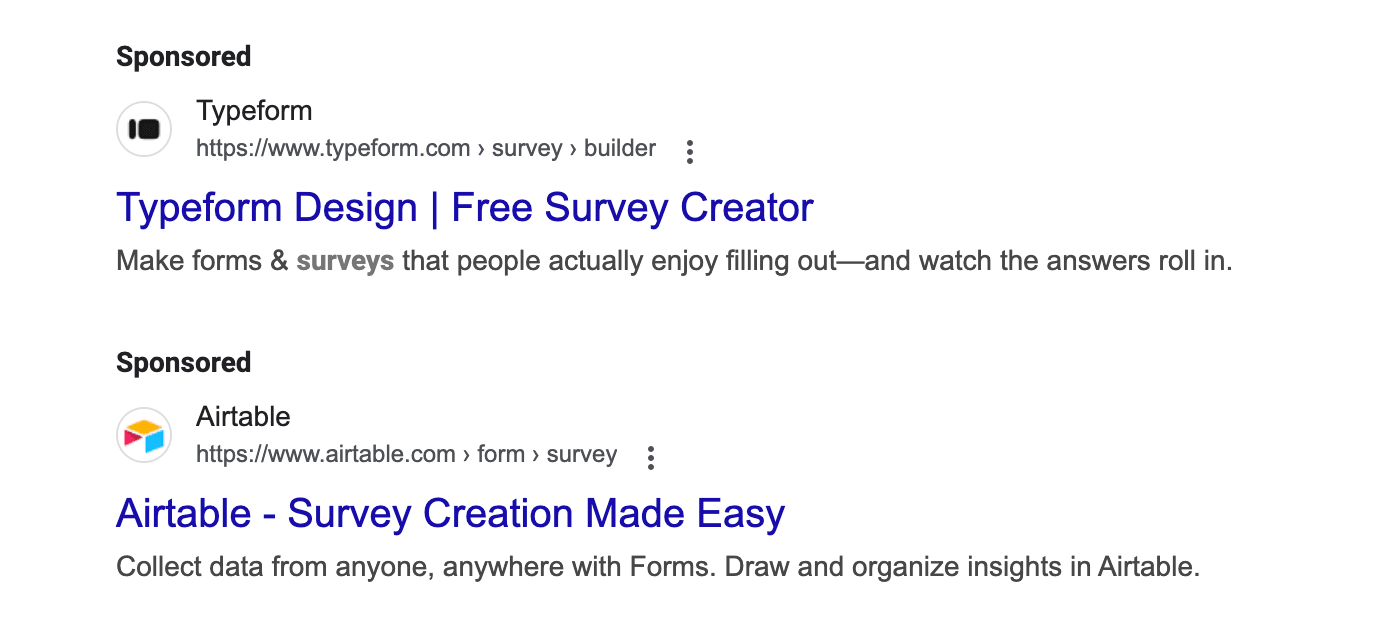
Benefits of lead generation
So why employ these lead generation techniques? Lead generation offers your business a number of benefits that other marketing strategies simply don’t.
Improves lead quality
First, using lead generation efforts helps bring in more qualified leads. A qualified lead is much more likely to buy than an unqualified lead. They fit your target customer and have the same pain points as someone likely to buy your product or sign up for your service.
It’s important to understand that, no matter what, you’ll still end up with unqualified leads landing on your website or signing up for your email newsletter. Let’s go back to our graphic design software example.
A content creator looking for tips on creating better graphics but not in the market to pay for a tool would be considered an unqualified lead, even if they still read your blog content or sign up for your newsletter.
A qualified lead might be a marketer from a large company looking to sign their entire marketing team up for the paid team plan of your software.
But by using lead generation tactics, you can aim to better center your content marketing efforts around the exact buyer persona you’re targeting. Your graphic design software can create business-oriented templates, focus content on teams, and speak directly to your target audience’s pain points.
This helps you bring in more high-quality leads, rather than anyone looking to create any kind of social media graphic.
Builds brand awareness
Lead gen tactics also help to spread the word about your business better.
With your content marketing campaign, you now have a library of relevant content to share on your marketing channels. By working SEO into your strategy, your website shows up in even more search results.
In addition, by posting more content on social media, you’re also reaching more of your ideal customers, building a larger following, and increasing awareness.
Valuable content spreads like wildfire and is an amazing inbound lead-generation tool. Reach an even wider audience and maximize your new leads.
Expands your market
When you first begin your lead generation journey, you likely have a niche idea of who your target audience is. But as you collect more and more leads, you may find that personas are converting that you hadn’t previously considered.
Learning more about your audience and finding new customer demographics that are interested in your business provides you with more opportunities to grow.
Lead generation best practices
Before you dive into your new lead generation strategy, keep these best practices in mind. They’ll help you maximize success with your campaign.
Work with expert marketers
Partner with marketers who have experience putting together lead-generation campaigns. They’ll know how to help you find your target audience and create content that appeals directly to them. Expert marketers can also help you pinpoint the most compelling lead magnet ideas.
Include lead generation knowledge in your job description if you plan to hire someone in-house. Or, outsource to a Fiverr specialist who can easily hop in with the team and set your business up for lead gen success.
Use a CRM
A CRM, or customer relationship management tool, is essential for successful lead generation. This tool allows you to collect data on your leads, such as their names, contact information, and even interactions with your business website.
Choose a CRM with features like lead scoring and activity tracking to ensure you can nurture the most qualified leads into becoming customers.
Use AI and machine learning
Incorporating AI and machine learning tools into your process can help you better identify your target audience, analyze data surrounding your leads, qualify and score new leads, and help with marketing automation.
This can streamline your lead nurturing process, helping you convert your leads more quickly and effectively.
Understand your audience
If you don’t understand your audience, you can’t create the right content to appeal to them. You can’t reach them on the right platforms. You won’t get qualified leads downloading your lead magnets.
The basis of a successful lead generation strategy—and subsequent business growth—is knowing who your audience is and what they need from your business.
Work with sales teams
Lead generation is a marketing strategy, but it’s even more impactful if your sales team is involved. This is because sales teams are often some of the people nurturing those leads.
Your sales team is involved in cold emailing and outreach. They’re sending correspondence to nurture big leads. They know the messaging for getting people in the door. Make sure your B2B marketers are getting input from your sales team to strengthen your lead generation strategy even further.
Hire lead generation specialists on Fiverr today
Start generating leads and growing your business today. Use the techniques we mentioned or get help from a lead generation specialist. Fiverr has a number of lead gen experts ready and waiting to help you get started.
Lead generation FAQs
What is the best strategy for lead generation?
Content marketing is one of the best strategies for lead generation. It plays into so many other techniques—SEO, social media marketing, email marketing, etc. By creating valuable content perfectly tailored to your target demographic, you can boost brand awareness, bring new marketing qualified leads (MQLs) in the door, and grow your business.
What are the 4 L's of a lead generation strategy?
The 4 L’s of a lead generation strategy are:
Lead capture: Step one in any B2B lead generation strategy is capturing as many leads that come to your website as possible.
Lead magnets: The way to maximize your lead capturing is through the use of lead magnets, or content extras you give away in exchange for an email address.
Landing pages: You can place these lead magnets on relevant landing pages on your website so your target audience can find them.
Lead scoring: This refers to the practice of lead qualification, or qualifying your new leads based on how likely they are to become customers based on how closely they line up with your target audience and how interested they are in your product or service.
How can you generate successful leads?
You can generate successful leads by first having a clear understanding of who your target customer is, what pain point your product or service solves for them, and how to reach them with your marketing content. It’s important to find people who already have some level of interest in what your business does to improve your chances of success.
What are the 4 steps of the lead generation process?
The four steps of the lead generation process are as follows:
Step 1: Identify your target audience.
Step 2: Create engaging content that grabs their attention and turns them into leads.
Step 3: Nurture your leads through consistent marketing communication and education about your business.
Step 4: Convert leads into paying customers.

